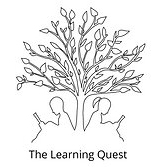
Empowering Learners: The Fusion of Active, Collaborative, and Learner-Driven Learning
In the realm of education, a paradigm shift towards learner-centered approaches has gained momentum, highlighting the paramount importance of active learning, collaborative learning, and learner-driven learning. This transformation is fueled by the recognition that the focus should shift from teaching to learning, enabling students to understand their learning journey deeply.
Traditionally, the notion that students should grasp insights into learning through their schooling experience has been widely acknowledged, yet its implementation has been limited. One factor hindering the transition to learning-centered classrooms is the prevalent teacher-centered approach, where the endeavor is often directed at imparting knowledge about learning. However, research has shown that simply 'teaching-learning skills' yields minimal impact, as learners may possess the skills without applying them effectively. To bridge this gap, the most potent strategy is a holistic one, guiding students to simultaneously employ learning strategies while critically assessing and monitoring their learning process. (Learning about Learning by Chris Watkins)

In the realm of learner-centered education, a transformative philosophy emerges, encapsulating a novel perspective, perception, and practice of education. Central to this approach is recognising each learner's distinctiveness, encompassing their diverse backgrounds, strengths, challenges, interests, and aspirations. Akin to unfolding wonders, learners are believed to possess a boundless potential that unfurls at a pace and manner unique to them. Furthermore, an intrinsic yearning for learning is acknowledged within each student, and the education system is tasked with unleashing this inherent desire. This educational philosophy forges a partnership between young learners, peers, and adults, fostering individual agency and empowering students to make autonomous choices aligned with their interests and ambitions. (Everything starts with the learner - Education Reimagined)
Diving deeper, the concept of learner-driven design propels students to steer their learning voyage actively. Unlike conventional pedagogies that extend some degree of freedom, a "learner-driven" approach empowers students to determine how they navigate course objectives and shape, plan, and craft course content. This heightened autonomy serves as a catalyst for elevated motivation, engagement, self-initiative, and inquiry. Learner-driven education is further exemplified through diverse content presentation methods, ranging from multifaceted readings to the creation and sharing of resources, which bolsters students' active participation in shaping their educational trajectory. (Jess Tess-Navarro)
As education transitions from industrial-age models to networked-era ecosystems, a pivotal shift is observed, mirroring the contemporary world and equipping learners for the dynamic path ahead. Educators play a crucial role by affording choices and opportunities, enabling students to manage and construct their learning and engage in authentic problem-solving. This cornerstone of learner-centered education instills the skills essential for societal contribution and active citizenship in the present and the future. (Learner-Centered Collaborative - Devin Vodicka and Katie Martin. )
In conclusion, the convergence of active, collaborative, and learner-driven learning signifies a remarkable transformation in education centered on the learner's agency, distinctiveness, and intrinsic desire for knowledge. This shift requires a departure from traditional teaching-centered paradigms, propelling education into a realm where learners are empowered architects of their own educational odyssey. The synthesis of these approaches is poised to redefine education, creating a vibrant ecosystem where learners thrive as self-directed, lifelong learners.
SITEMAP
SUPPORT US

